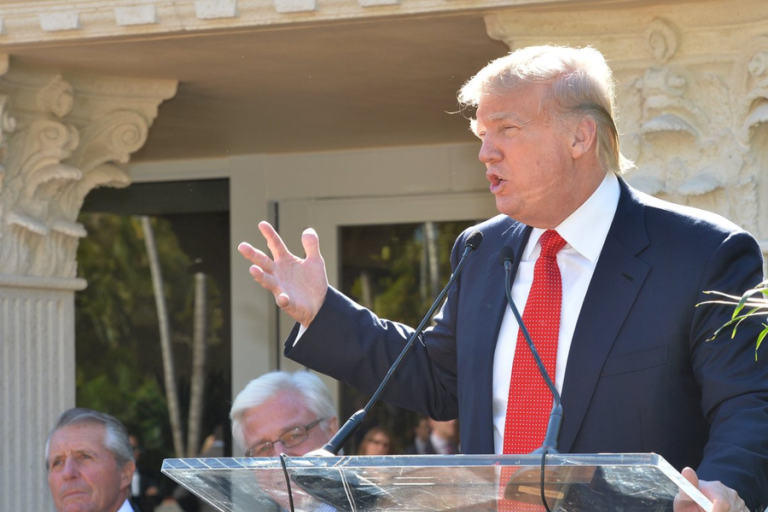
Trump's pharmaceutical tariffs
Introduction
Former President Donald Trump has revealed plans to put a comprehensive 100% tariff on imported branded and patented pharmaceuticals, marking the most recent development in U.S. trade and healthcare policy. Trump’s pharmaceutical tariffs The legislation, which is set to go into effect on October 1, has the potential to significantly change the dynamics of the US drug market. The decision instantly prompted worries of increasing pricing for consumers, as the United States imports about $200 billion worth of drugs each year.
However, the situation is not wholly biassed. Additionally, Trump has put forth a number of exemptions that would lessen the impact on patients and protect numerous large pharmaceutical companies. The discussion surrounding these tariffs is rapidly becoming one of the most divisive topics at the nexus of trade policy and healthcare.
This article examines the potential effects of Trump’s pharmaceutical tariffs on consumers, pharmaceutical businesses, international trade ties, and the long-term state of American healthcare.
The Declaration: Branded Imports Will Face a 100% Tariff
Trump said that all branded or patented medications imported into the US would be subject to a 100% tariff in a post on his social media platform, Truth Social. His long-standing claim that Americans spend much more on prescription medications than those in other affluent countries is supported by the announcement.
Pharmaceutical imports into the United States reached over $213 billion in 2024, about three times the amount ten years prior, according to the United Nations Comtrade Database. America’s reliance on international pharma supply chains, of which Europe and Asia are major suppliers, is largely responsible for this growth.
The goal of Trump’s action is to level the playing field and encourage businesses to invest in manufacturing in the United States.
The reasons behind the high cost of drugs in the United States.

It’s crucial to comprehend why prescription medications are so expensive in the United States in comparison to other countries before delving into the tariff implications.
Centralised price negotiation is absent.
- The United States permits manufacturers to determine their own medicine pricing, in contrast to many other nations where the government sets them. Trump’s pharmaceutical tariffs As a result, Americans frequently spend almost twice as much for common prescriptions as people throughout the world.
Protections of Patents
- Because of their extended patent exclusivity, name-brand medications are able to keep less expensive generics off the market.
Complexity of the Supply Chain
- Before medications are delivered to patients, additional costs are incurred by importation, distribution, and insurance systems.
Given this, if tariffs are added without carefully considered exemptions, price inflation may worsen.
Industry Response: Concerns Are Raising
The news was swiftly met with resistance from the pharmaceutical sector. The main lobbying organisation for the industry, the Pharmaceutical Research and Manufacturers of America (PhRMA), contended that the tariffs would take funds away from innovation.
According to PhRMA senior executive Alex Schriver, “every dollar spent on tariffs is a dollar that cannot be invested in American manufacturing or the development of future treatments and cures.”
Potential supply problems were also cautioned about by industry representatives. Trump’s pharmaceutical tariffs Due to the possibility of shortages, medicines have historically been protected from tariffs on a global scale. There can be unanticipated repercussions if that precedent is reversed.
Exclusions That May Reduce Customer Anguish
The tariff plan contains substantial exemptions that might lessen its impact, despite the strong rhetoric.
Drugs That Are Generic Are Exempt
Nine out of ten prescriptions filled in the United States are for generic medications. The Food and Drug Administration (FDA) estimates that the healthcare sector already saves around $300 billion a year because to these less expensive options. Trump’s pharmaceutical tariffs The majority of people might not notice price increases for the medications they take on a daily basis right away because generics seem to be excluded.
American-Based Production Is Safe
Any pharmaceutical business with current or planned facilities in the United States would be exempt, according to Trump’s specifications. Giants like Pfizer, Johnson & Johnson, Novartis, and Roche fall into this category; in recent years, they have all spent billions of dollars growing their operations in the United States.
International Trade Accords Could Offer Protection
Nearly 60% of U.S. pharmaceutical imports come from the European Union, which thinks a recent accord setting tariffs at 15% may provide some protection. Although it is still analysing the statement, Ireland, America’s top pharmaceutical supplier, seems certain that the cap will remain in place.
Impacts in the Short and Long Terms
Short-Term: Stabilisation and Stockpiling
Many analysts predict that consumer medicine prices will not change much in the near future. According to reports, pharmaceutical businesses started hoarding inventories earlier this year in preparation for the imposition of tariffs. Trump’s pharmaceutical tariffs Patients won’t immediately experience the effects of this.
Long-Term: Possible Supply Chain Changes

The scenario becomes increasingly complex over time. The cost of branded medications may increase significantly if tariffs are maintained and exemptions are reduced. Trump’s pharmaceutical tariffs However, the legislation might also encourage businesses to move their manufacturing to the United States, which would raise production prices while also creating jobs.
“The ultimate impact depends on whether exemptions expand or contract,” said Neil Shearing, chief economist at Capital Economics. The impact on customers will be negligible if it is implemented widely. Households may incur large new costs if they tighten.
Worldwide Reactions
Asia
About 20% of the pharmaceuticals imported into the United States come from Asia. According to analysts, if the tariffs are strictly imposed, the region may suffer the most short-term losses.
International Trade Tensions
The tariffs could also fuel new trade disputes at the World Trade Organization (WTO), especially if other countries perceive them as protectionist and discriminatory.
Crossroads in Healthcare Policy
The more general debate is whether tariffs are the best way to deal with the high cost of drugs in the United States. Critics contend that fundamental changes are necessary to address costs, including granting Medicare direct bargaining power with pharmaceutical companies, policing pharmacy benefit managers, and expediting generics approval.
They contend that tariffs don’t address the root causes of high prices; they merely move costs around. However, supporters argue that relocating production to the United States improves security, lessens reliance on outside vendors, and guarantees crisis resiliency.
What It Means for Consumers
For everyday Americans, the outcome of this policy will come down to a few key questions:
- Will generics remain exempt?
- Will companies with partial U.S. operations qualify for broad exemptions?
- How aggressively will the government enforce the tariffs?
If exemptions remain wide, most consumers may only see modest increases in drug costs. But for patients relying on cutting-edge branded therapies with limited alternatives, the impact could be significant.
Conclusion:
Trump’s tariffs on pharmaceuticals are a risky move at the intersection of healthcare and trade policy. The administration intends to bring production back to the United States and achieve lower costs for American patients by enacting 100% tariffs on imported branded medications.
However, the exemptions—which apply to generics, facilities located in the United States, and perhaps international trade agreements—may considerably lessen the impact. Due to widespread carve-outs and stockpiling, customers are not expected to experience an immediate hardship. The long-term effects, however, will depend on how strictly the rules are enforced and how companies adapt.






